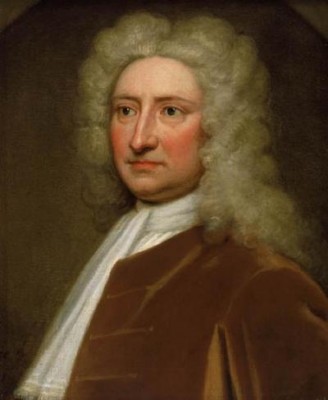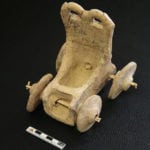 Animals
Animals  Animals
Animals  Miscellaneous
Miscellaneous 10 Times Product Placement Spectacularly Backfired
 Mysteries
Mysteries 10 Individuals Allegedly Killed by the U.S. Government
 Music
Music 10 Disc Jockeys Who Barricaded Themselves in the Studio
 Weird Stuff
Weird Stuff Ten Absurd Facts About Picking Your Nose
 Food
Food 10 Mind-Melting Facts About American Cheese
 Movies and TV
Movies and TV 10 Sci-Fi & Fantasy Films That Are Actually About Climate Change
 Our World
Our World 10 Real Ways Scientists Think Humans Could Evolve Next
 Weird Stuff
Weird Stuff History’s Ten Craziest Coincidences
 Humans
Humans 10 Cave Explorers Who Never Made It Out Alive
 Animals
Animals 10 Strange Animals You Won’t Believe Actually Exist
 Miscellaneous
Miscellaneous 10 Times Product Placement Spectacularly Backfired
 Mysteries
Mysteries 10 Individuals Allegedly Killed by the U.S. Government
Who's Behind Listverse?

Jamie Frater
Head Editor
Jamie founded Listverse due to an insatiable desire to share fascinating, obscure, and bizarre facts. He has been a guest speaker on numerous national radio and television stations and is a five time published author.
More About Us Music
Music 10 Disc Jockeys Who Barricaded Themselves in the Studio
 Weird Stuff
Weird Stuff Ten Absurd Facts About Picking Your Nose
 Food
Food 10 Mind-Melting Facts About American Cheese
 Movies and TV
Movies and TV 10 Sci-Fi & Fantasy Films That Are Actually About Climate Change
 Our World
Our World 10 Real Ways Scientists Think Humans Could Evolve Next
 Weird Stuff
Weird Stuff History’s Ten Craziest Coincidences
 Humans
Humans 10 Cave Explorers Who Never Made It Out Alive
10 Amazing Facts About the Transit of Venus
A transit in astronomical terms is when one heavenly body passes in front of another such that, as viewed from Earth, we can see one move across the other in the background. The moon transiting in front of the sun during a solar eclipse, for example. Much more rare than a solar eclipse is the planet Venus transiting the Sun. The last time this took place was in 2004. But you are in luck! The next transit of Venus will occur this year! On June 5 to June 6, 2012 those positioned in the right spot on Earth, and with clear skies, will get to see this very rare event. The best spot to see the transit will be in the Pacific Ocean. The island of Tahiti is ideal for those who wish to travel to see it happen and the island is making preparations for many “astronomy tourists” to go there to view the transit. Portions of the transit will be viewable from Europe and North America. Most of South America and western Africa will not be able to see the transit. What an observer will see is a small black dot (Venus) passing in front of the sun. Depending on where you are on Earth to view the transit, you may see the dot move slowly across the Sun for several hours.
Sequences of transits occur in a pattern that repeats every 243 years, with transits occurring eight years apart followed by a gap of 121.5 years, then a gap of eight years (the 2012 transit finishes the latest eight year period from the transit of 2004) and then another long gap of 105.5 years until the next transit. So for those who miss the Venus transit this June, you will have to live to be very old indeed to catch the next pair of transits (2117 and 2125). To see if you can view part or all of the 2012 Venus transit go here (warning – may need fast internet connection).
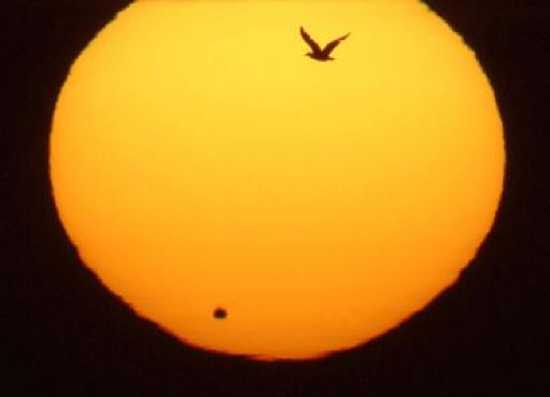
As Galileo invented his first telescope in 1609 the first chance to observe a Venus transit using modern optical devices came with the transits of 1631 and 1639. Five years before the 1631 transit, in 1627, Johannes Kepler became the first person to predict a transit of Venus. Kepler successfully predicted the 1631 event. However, Kepler was unable to determine where would be the best location to observe the transit, nor did he realize that in 1631 the transit would not be observable in most of Europe. Therefore, no one made arrangements to travel to where they could see it, and this transit was missed.
Fortunately, 8 years later on December 4, 1639, a young amateur astronomer by the name of Jeremiah Horrocks became the first person in modern history to predict, observe, and record a Venus transit. Horrocks corrected Kepler’s earlier calculations and realized what we now know about Venus transits, that they occur eight years apart after long (very long) waits. It is commonly stated that he performed his observations from Carr House in Much Hoole, near Preston England. Horrocks also told his friend, another amateur astronomer by the name of William Crabtree, about the coming predicted transit and he also spotted the planet’s silhouette on the solar disk. Crabtree probably observed near Broughton, Manchester England. Although Horrocks was uncertain when the transit would begin, he was lucky enough to guess the time so that he was able to observe part of it. He used a telescope to shine the image onto a white card, thus safely observing the transit without harming his eyes. Using his observational data, Horrocks came up with the best calculation for an Astronomical Unit (AU).
One hundred and twenty-two years later came the next eight-year pair of Venus transits. During that time the noted astronomer Edmond Halley (of Halley’s comet fame) had proposed that scientists could gain an accurate estimate of the distance between the Earth and the Sun (an Astronomical Unit or AU) using the scientific principal of parallax. Parallax is the difference in the apparent position of an object viewed along two different lines of sight, and is measured by the angle or semi-angle of inclination between those two lines. Halley correctly reasoned that if the Venus transit was viewed and measured from very distant points on the Earth, that the combined measurements, using parallax, could be used (with trigonometry) to calculate the actual distance between the Earth and the Sun (AU). Up to that time, the scientists were using Horrocks determination of AU, but realized they needed many more accurate observations to get a truer calculation.
Thus the Venus transits of 1761 and 1769 launched an unprecedented wave of scientific observations to the farthest points of the Globe. This was one of the earliest examples of international scientific collaboration. Getting (and surviving the trip) to these locations was as much an adventure as obtaining the first accurate data for a Venus transit. Scientists, mostly from England, France, and Austria, traveled to places as far apart as Newfoundland, South Africa, Norway, Siberia, and Madagascar. In South Africa very good measurements were obtained by Jeremiah Dixon and Charles Mason who would later go on to add their name to the historic Mason-Dixon Line in the USA. Noted points of the globe for the 1769 transit included Baja, Mexico; Saint Petersburg, Russia; Philadelphia Pennsylvania, USA; Hudson Bay, Canada; and from Tahiti, the great British explorer Captain Cook observed the transit from a place he called “Point Venus.”
Using the data obtained from the two transits, French astronomer Jérôme Lalande calculated the astronomical unit to have a value of 153 million kilometers. The calculation was a considerable improvement on Horrocks’ calculations from the 1639 observations. The modern measurement for an AU is 149 million kilometers (92,955,807.3 miles).
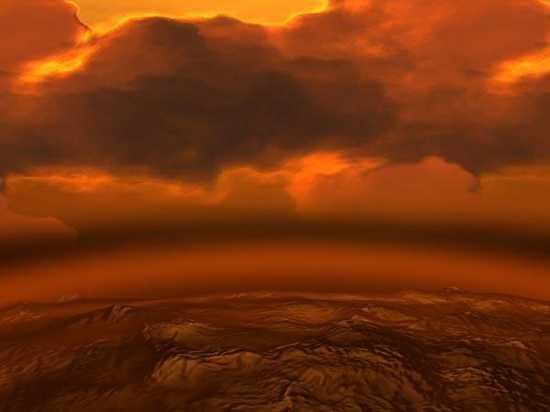
Prior to astronomers viewing the transit of Venus no one knew Venus had an atmosphere. All of that changed with the 1761 Venus transit. Looking from the Petersburg Observatory, Russian scientist Mikhail Lomonosov predicted the existence of an atmosphere on Venus. Lomonosov saw the image of Venus refracting solar rays while he observed the transit. During the initial phase of the transit, he saw a ring of light around the trailing end of the planet (the portion that had not yet transited in front of the sun). He correctly inferred the only thing to explain the light refraction would be an atmosphere around the planet.
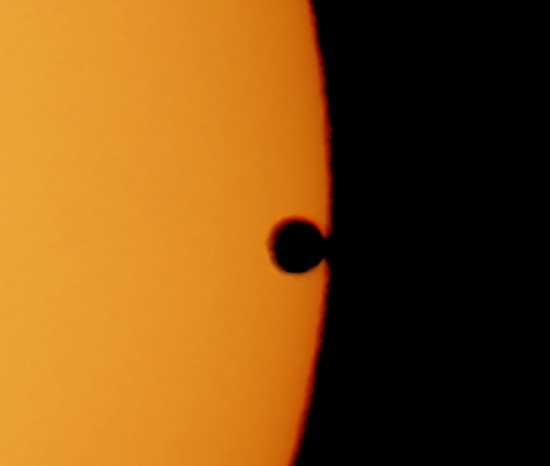
When observing the Venus transit, the most critical times are the first, second, third, and fourth contact. Being able to clearly see and time these transitions – from the shadow of Venus not touching, to just first touching the suns disc (first contact) the time the shadow of Venus fully transits into the disc of the Sun (second contact), and then when exiting, the point where the leading edge of the shadow of Venus again touches off the disc of the Sun (third contact), back into outer space, and the time the entire shadow has left the disc of the Sun (fourth contact) and is no longer visible – is important to gain accurate data. Unfortunately, an optical phenomenon called the black drop effect makes it difficult to see the second and third contacts.
Just after second contact, and again just before third contact during the transit, a small black “teardrop” appears to connect Venus’ disk to the limb of the Sun, making it impossible to accurately time the exact moment of second or third contact. This negative impact on the timing of the second and third contact contributed to the error in calculation of the true value of AU, in 1761 and 1769 transits. It was first thought the black drop effect was caused by the thick atmosphere of Venus, but it is now believed it is caused mostly by interference in the Earth’s atmosphere. Today, better telescopes and optics are minimizing the black drop effect for astronomers observing Venus (and Mercury) transits.

By the time the 2004 and 2012 Venus transits rolled around, measurements of AU could be made using other and more accurate measuring techniques. However, that did not mean the 2004 and 2012 transits were not highly anticipated. They could still be used to do very important science, in this case, helping in the search for planets outside our solar system.
Scientists were eager to learn more about how patterns of light were dimmed and interfered with as Venus blocked out the Sun’s light. This would provide data to develop new and better methods to use the same technique to look for planets orbiting distant suns. Right now, a variety of other methods are used to “see” extrasolar planets orbiting distant suns. But most of these methods require the extrasolar planets to be very large – Jupiter-sized planets. Perfecting a way to “see” an extrasolar planet based on the light it blocks, coming from its sun, when it transits, would be a much more accurate way to detect the planet and could be used to ‘see” and calculate the size of much smaller planets orbiting these suns. However, extremely precise measurement is needed: for example, the transit of Venus causes the Sun’s light to drop by a mere 0.001 magnitude, and the dimming produced by small extrasolar planets will be much less.

In December 1882, astronomer David Peck Todd traveled from Amherst College in Massachusetts to California to photograph the transit of Venus. The transits of 1874 and 1882 were the first since the invention of photography so Todd’s documentation of the Venus transit was one of the first made using photographs. On top of Mount Hamilton from what would become Lick Observatory (still under construction in 1882), Todd collected a series of photographs during the December 6 transit. Viewing conditions were ideal with no clouds and he collected 147 glass negative plates documenting most of the transit. The plates were carefully stored but soon forgotten as astronomers found better ways to view and document the transits.
In 2002, two astronomers writing for Sky and Telescope magazine rediscovered the long forgotten plates, all of them intact and in good condition. They realized the sequence of photos could be made into the first “motion picture” of a Venus transit. The resulting “movie” documents one of the historic observations of a Venus transit. You can see the animation of the transit made using the 147 negatives here (warning – you need QuickTime and a fast internet connection).
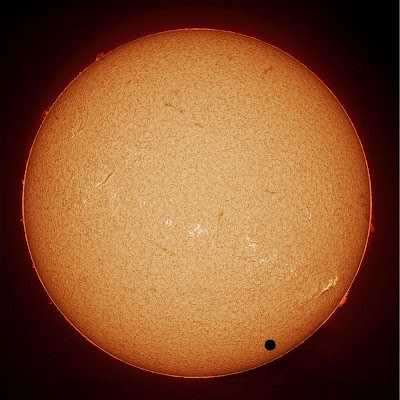
The months in which we can see the eight-year pairings of Venus transits is “creeping” forward. Before the 1631 transit, the pair occurred in May and November. Transits can currently occur only in June or December. Transits usually occur in pairs, on nearly the same date eight years apart. This is because the length of eight Earth years is almost the same as 13 years on Venus, so every eight years the planets are in roughly the same relative positions. However the small difference means the timing of the arrival of the eight-year pairs of transits is slowly creeping forward on the Earth calendar.
This approximate conjunction between Earth and Venus usually results in a pair of transits, but not always. The transit of 1396 did not have a pair (there was no transit in 1404, one did not appear until May 1518). The next “solo transit” will be in 3089.
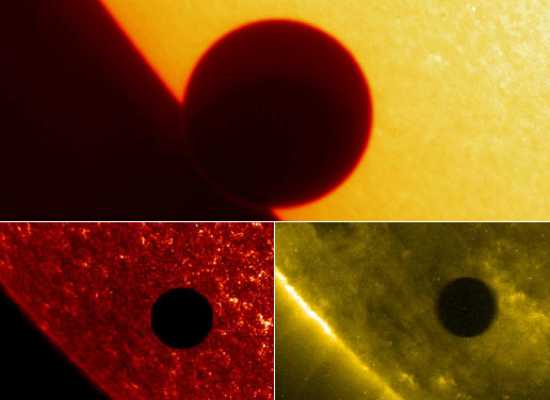
Multiple transits are very, very, very rare occurrences, but do happen. It is possible for there to be a solar eclipse and a transit of Venus at the same time. The last time this took place was in the year 15,607 BC. The next solar eclipse plus Venus transit will occur on April 5, 15,232.
It is also possible for Mercury and Venus to transit the Sun at the same time. That’s right, both of Earth’s inner planetary neighbors perfectly lining up with the Earth’s orbit and the Sun so that an observer on Earth could see both tiny shadows passing in front of our Sun at the same time. The last time this happened was in the year 373,173 BC. The next time the simultaneous transit of the Sun by both planets will occur will be July 26, 69,163. Will man even be around to see this far off transit?
The year 1882 was a Venus transit year and to commemorate this historic event, and the unveiling of a statue of American physicist Joseph Henry (who developed the first electric motor and was the first secretary for the Smithsonian Institute), the famous bandleader and composer John Philips Sousa was commissioned to write a march. Sousa wrote the march, it was published by the J.W. Pepper Company, and quickly forgotten about and lost. But not before the march was performed for the first time on April 19, 1883 at 4pm, which, for Sousa, a Freemason, had Masonic significance having to do with the element copper, copper used in electric motors (invented by Henry), and Venus, which probably makes perfect sense to Masons reading this list but is lost on the author.
In any event, the march came and went about as fast as a Venus transit and was thought lost for over 100 years until it was rediscovered in the Library of Congress in… wait for it… 2003! Yes, one year before the 2004 transit the long lost Sousa march “Transit of Venus March” was found just in time to celebrate the next transit! In 2004 the Library of Congress joined with NASA to bring back the long lost march to the general public (who, apparently, were as thrilled with it as the people of 1883). Now you too can hear Sousa’s Transit of Venus March (which to me sounds just about the same as all his other marches) in the clip above.

A French scientist and astronomer who took long names to a new extreme – Guillaume Joseph Hyacinthe Jean-Baptiste Le Gentil de la Galaisière (Guillaume Le Gentil) made some important contributions to astronomy, especially some of the first observations of several Messier objects. But it was his role as part of the international drive to document the 1761 Venus transit that makes him such an interesting and tragic figure.
Le Gentil was one of over a hundred observers from around the world who marched or sailed off to far away locations of the globe so as to gain various far flung vantage points of the transit to help calculate a more accurate determination of an AU. Not all of these expeditions met with success, in fact, many were thwarted by cloudy skies, rain, unfriendly natives, difficulty getting to where they wanted to go, and faulty equipment. But no one was as unlucky as Le Gentil.
Guillaume le Gentil set out from Paris in March 1760 bound for Pondicherry, a French colony in India. He reached Mauritius in July. But by then he learned that France and Britain were at war. Before his ship arrived, he learned the British had occupied Pondicherry so the ship diverted back to Mauritius.
On June 6, 1761 the transit arrived as predicted, but Le Gentil was still on board the ship. Though the skies were clear he could not make observations aboard the rolling deck of a ship at sea. No problem, he thought, I came this far, I will wait for the next transit, eight years away.
He passed the time, among other ventures, mapping the coast of Madagascar and then set off or Manila in the Philippines to see the 1769 transit. Once there however he was met with resistance from the Spanish authorities. So he set sail once again for Pondicherry India. He arrived in March 1768 and built a small observatory and waited. June 4, 1769 finally arrived and though previous weeks had offered perfect clear skies, June 4th had nothing but clouds and rain. He saw nothing. Despondent, he decided to return to France. He was delayed by an attack of dysentery and then his ship was caught in a storm. He was dropped off at the small island of Reunion, east of Madagascar, and he had to wait until a Spanish ship could bring him back to France. He arrived in France almost 11 years after he left, in 1771, only to find he had been declared dead, removed from his position in the Royal Academy of Sciences, and stripped of his fortune by his greedy relatives. Oh yes, his wife had remarried as well. Eventually his position to the Academy was restored and he lived out the remainder of his life in France.
